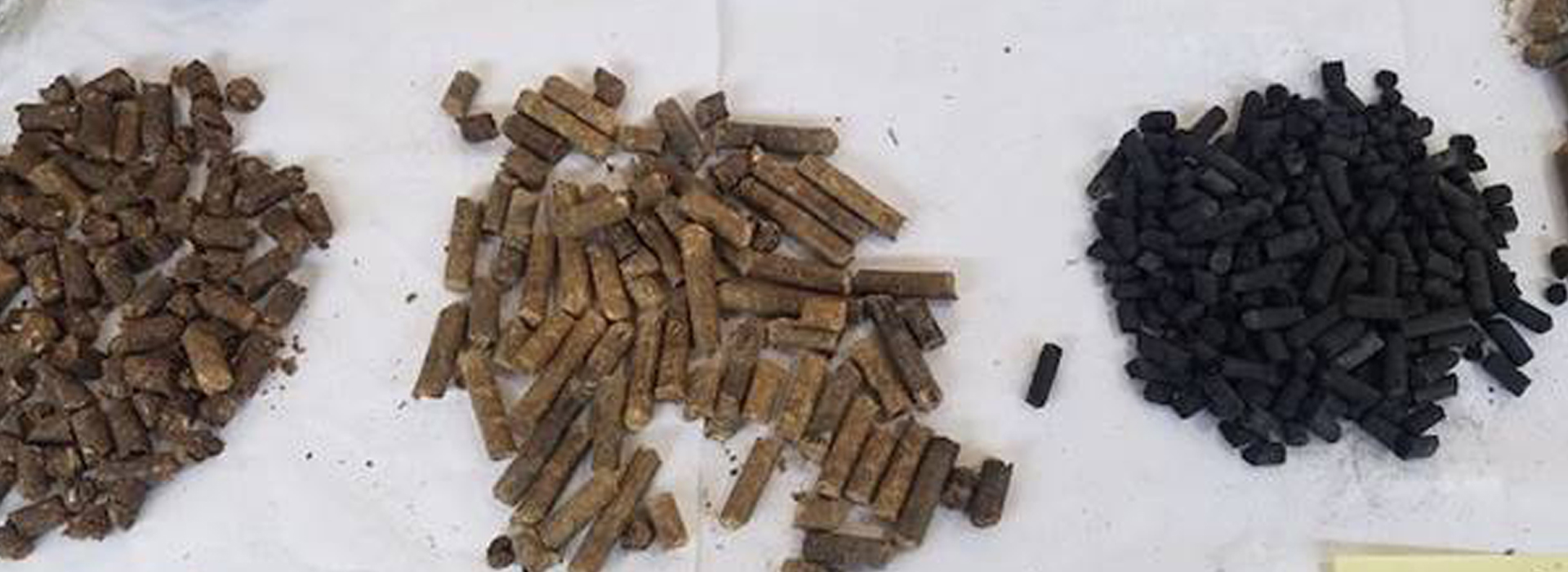- Case Description
- Details of Business Model
- Impact
- Innovation
- About Pioneer
- Geography
Case Description
Rice straw is converted to solid biofuels by deploying mechanical or thermal processes and their combinations to densify biomass. Solid biofuels have various industrial and commercial uses such as thermal power plants, industrial boilers, tandoors etc. to replace non-renewable or pollution fuels such as wood, coal, high sulphur diesel/HSD, pet coke etc.
Depending on the actual process, there are two kinds of solid biofuels –
- Simple biomass pellets or grey pellets which is simply biomass in densified form offering advantages in transportation and storage over straw balesBiomass co-firing is assessed by CII CABL to be one of the most cost-effective option among all biomass conversion technologies that exists so far. One of the biggest opportunity is the use of calorific value of rice straw-based solid-fuel pellets is 3400-3500 Kcal/Kg which is comparable to washed coal (3500-3800 Kcal/Kg).
- Torrefied pellets or bio-coal which is a refined product requiring second level of processing after pelletisation
Although bio-coal needs additional investment, it offers following advantages over traditional pellets-
- It is similar to coal in fuel properties which means near-zero changes in the boiler or pre-treatment processes
- It has longer shelf life compared to grey pellets which are prone to generation and loss of energy value with the storage period
Agri to Power (A2P), a start-up working in Punjab is reducing rice straw burning and addressing air pollution by putting up sustainable projects by converting paddy straw into solid fuel pellets for energy application. Solid fuel palletisation plant requires storage of biomass for year-round, however the baled biomass undergoes degradation with time, causing a dip in rice straw’s calorific value which lead to losses. The solid pellets energy value can be improved with partial addition of reside of other crops i.e. wheat, corn, cotton, mustard etc. based on the consumer requirement. Even nutritional supplements are added to make biomass-based animal feed. A single facility is seen to cater for multiple consumers.
Besides its variety of application there are only handful of entrepreneurs working on palletisation because of two major barriers, one is the financial investment required for collection and storage of paddy straw for year-round supply, second is that the extruder and shredder working on rice straw undergo wear and tear more frequently increasing running and maintenance costs.
To improve solid biofuel uptake, Ministry of Power, Government of India mandated coal-based power plant to utilize biomass-based fuel up to 5% which will increase to 7%, reducing import burden on economy while improving rural economy.
Details of Business Model
- Plant Scale: 1 tonne per hour capacity working for 14 hour per day and 300 days annually
- Capital Expenditure: INR 74 lakh
- Operational Expenditure: INR 1.69 crore including cost of raw material (54%) and maintenance cost for working parts of machine (16%) (A2P Energy Analysis)
- Payback Period: 1.8 years (CII CABL (2021) Analysis)
Impact
Use of solid fuel pellets reduces open burning of biomass, 1 tonne solid fuel pellets lead to 1.2 tonnes of biomass avoided from burning which saves almost 5.6 kg of PM10 , 5.1 kg of PM2.5 , 1.32 tonnes of CO2e emissions and 91.81 kg of gases emissions from entering directly into the environment.
Innovation
Agri to Power uses innovative methods such as machine learning for mapping industrial boilers, cross referenced with areas of high fire incidences where huge impact can be made by installing pelletisation facility. The use of this innovative method for mapping industrial boilers for the use of pellets and modified equipment helps them reduce cost by 12%.
Geography
Location: Rajpura, Punjab




